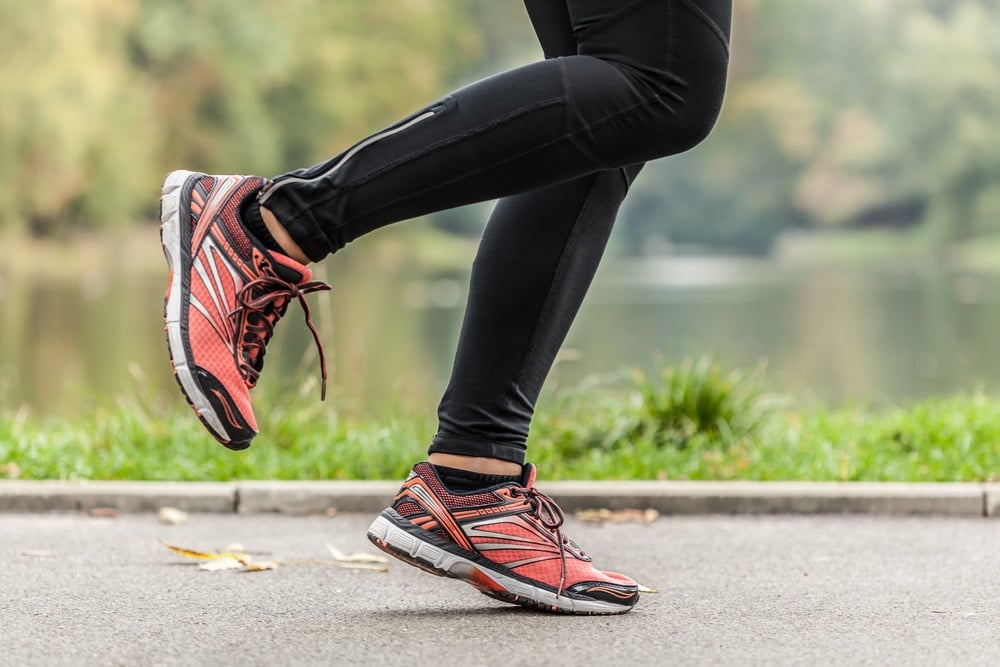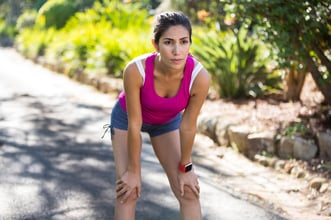Orthopedic Tips For Athletes With Knock Knees

Many people – especially athletes - suffer from knee injuries, chronic knee pain, and/or knee surgery. Knock knees is a condition where the knees curve inward. The knees angle in and touch when straightened, but the ankles remain a distance apart from one another. The medical term for knock knees is valgus knee or genu valgum. It is painful, a cosmetic deformity – and can lead to premature arthritis of the knees. Athletes with knock knees - can find this condition very challenging.
The Cause of Knock Knees
Some causes of knock knees are genetic. The condition is usually recognized when a child is two to four years of age. Usually, knock knees will straighten significantly by the time the child is seven or eight. If the condition doesn’t resolve on its own, treatment may include orthotic shoes or braces to be worn during the night.
Musculature is another cause of knock knees. It presents as a gap that is created at the medial or inside compartment of the knee. This gap can cause stretching of the medial ligaments. This is most common in females whose wider hips increase the angle of the femur, directing toward the midline of the body.
Knock knees can be the result of tight hip muscles that pull the legs together, weak medial gluteus muscles or inward angling of the foot. It can also be a way for the body to compensate for pain from another area of the foot, leg or hip.
An injury to the shin bone can also cause knock knees, as well as osteoarthritis or rheumatoid arthritis.
Athletes with Knock Knees
 Regardless of the sport or exercise, your knees take much of the force that is exerted. It is important for athletes and those who work with them to understand the structure and movement of the knee. Recognizing a valgus knee and knowing the basic corrections of position and stress on the knee will help decrease its incidence and the pain it can cause.
Regardless of the sport or exercise, your knees take much of the force that is exerted. It is important for athletes and those who work with them to understand the structure and movement of the knee. Recognizing a valgus knee and knowing the basic corrections of position and stress on the knee will help decrease its incidence and the pain it can cause.
Knock knees in athletes can present a particular set of problems. Because of the stress on the knees, this condition can be a cause of ACL injuries. Hip weakness is sometimes the cause for knock knees for athletes that run. A running posture is a significant contributor to knee injuries. Strengthening the hip abductor muscles may decrease the symptoms for a runner, but does not always change the presence of knock knees.
Knock knees don’t just affect the knees. This condition also affects the hips, knees, and ankles. The condition can progress, causing the joint to eventually wear out. The knee’s medial ligaments may continue to stretch, which could cause an even greater deformity.
Tips and Exercises to Help with Knock Knees
 Many people who have knock knees can be helped with physical therapy and exercises. Strengthening the outer leg muscles (abductor muscles), developing and activating the arches of the feet and moving the inner ankle bone inwards and towards the outer ankle bone (upward towards the knee) can all help in lessening the condition.
Many people who have knock knees can be helped with physical therapy and exercises. Strengthening the outer leg muscles (abductor muscles), developing and activating the arches of the feet and moving the inner ankle bone inwards and towards the outer ankle bone (upward towards the knee) can all help in lessening the condition.
Athletes with knock knees may also benefit from weight loss and Yoga to help decrease the pain and discomfort of knock knees.
Treatment for Knock Knees
An orthopedic specialist is needed in order to correctly diagnose the condition of knock knees. He or she may direct you to a physical therapist for an exercise regimen that will help strengthen muscles in order to decrease the amount of deformity.
Avoiding high-impact sports is also a remedy – which is undesirable for many athletes.
Surgery for Knock Knees
When exercise and non-invasive treatment don’t alleviate the pain and symptoms of knock knees – surgery may be the treatment of choice for athletes with knock knees. The deformity can be surgically corrected. If you are an athlete who suffers from knock knees, you may benefit from an osteotomy surgery.
The goal of this surgery is to slow down the wear and tear of the knee and prevent a knee replacement surgery down the road. It will also prevent and reduce the pain you are having now and decrease the likelihood of arthritis in the future.
During this procedure, a surgical cut is made in the bone. Then either an internal or external device is placed to correct the deformity without removing any additional bone. Your orthopedic surgeon will choose the proper device depending on your deformity.
Recovery from surgery for knock knees includes physical therapy. You should be able to get back to your normal activities after a few weeks.
It is important for athletes with knock knees to visit an orthopedic specialist. An orthopedic specialist will be able to accurately diagnose your condition and offer you advice and options for treatment. He or she will develop a treatment plan, especially for you. With proper evaluation and treatment, you will be able to get back to doing what you love – and continue on with your active lifestyle.

